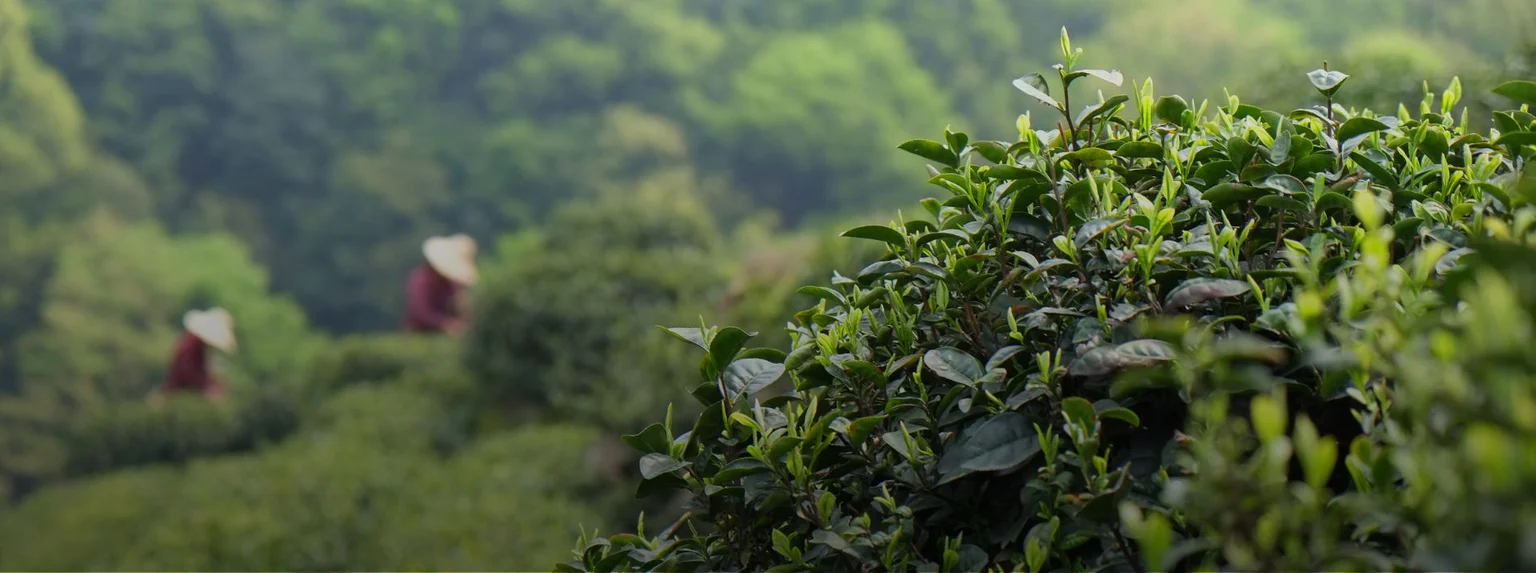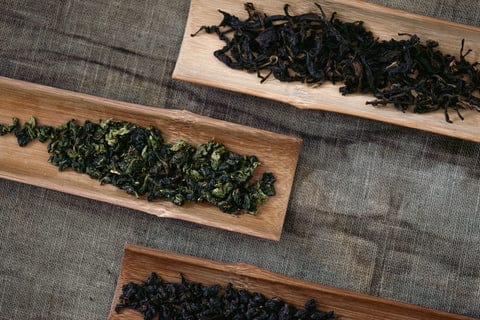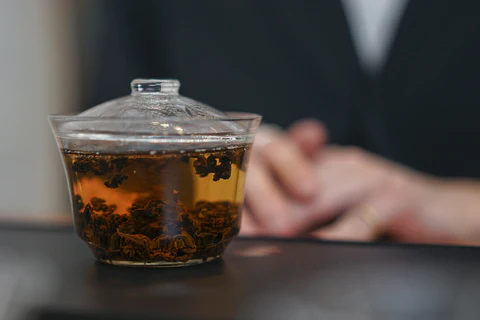
Blog
What is oolong tea

Oolong tea is a semi-fermented tea unique to China, with a flavor that lies between green tea and black tea. Due to its unique production process, it retains the freshness of green tea while also having the richness of black tea, resulting in a rich and layered taste. This article will provide a detailed introduction to oolong tea, giving you a comprehensive understanding of its origin, types, production process, brewing techniques, and more. By reading this article, you will gain a thorough understanding of everything related to oolong tea.
Learn about Oolong Tea
Oolong tea is a semi-fermented tea, with a fermentation level between 10% and 70%, placing it between green tea (unfermented) and black tea (fully fermented). This characteristic gives it a diverse flavor profile, neither as tart as green tea nor as strong as black tea.
It has a balanced taste, smooth texture, and a distinct aftertaste, making it ideal for those who enjoy exploring different tea flavors. It is popular worldwide.
The Origins and Varieties of Oolong Tea
The core production areas of oolong tea are concentrated along China’s southeastern coast, with Fujian being the birthplace of oolong tea. Guangdong Province and Taiwan also have their own unique production methods and flavors.

oolong tea
Fujian Oolong Tea
Anxi Tieguanyin: This tea is divided into two types: light-fermented (with a prominent orchid aroma and clear tea soup) and heavily-fermented (with a honey aroma and rich taste). It is one of the most famous oolong varieties in the world.
Wuyi Rock Tea: Produced in the Danxia landform of Wuyi Mountain, it is renowned for its “rock韵” (a unique aroma blending minerals and caramel). Representative varieties include Da Hongpao (rich and sweet), Water仙 (long-lasting orchid aroma), and Cassia (spicy cinnamon aroma).
Guangdong Oolong Tea (represented by Phoenix Single Bush)
Produced in Phoenix Mountain, Chaozhou, it is picked from single bushes, with over 30 aroma types, such as Huangzhi Xiang (similar to gardenia), Mi Lan Xiang (honey mixed with orchid), and Ye Lai Xiang (imitation floral aroma). Its aroma is intense and layered, earning it the nickname “perfume of teas.”
Taiwanese Oolong Tea
Dongding Oolong: Medium fermentation, with ripe fruit and caramel aromas, smooth texture.
High Mountain Oolong: Grown at high altitudes, lightly fermented, with intertwined milk and floral aromas, sweet tea broth, a popular choice for beginners.
The Production Process of Oolong Tea
The core of the production process of oolong tea lies in the precise control of “semi-fermentation.” Although there are many steps, they are all interconnected and directly affect the flavor:
1. Picking: Select mature fresh leaves with one bud and two or three leaves. They should be picked on a sunny morning when the moisture content of the leaves is moderate and the aromatic substances are stable.
2. Wilting: Spread the fresh leaves in a well-ventilated area to naturally lose moisture and soften, preparing them for subsequent fermentation. Avoid direct sunlight to prevent leaf damage.
3. Shaking: A critical step where the leaves are shaken and collide in a bamboo sieve, causing edge damage and oxidation, releasing floral and fruity aromas. The number and intensity of shakes determine the fermentation level—light shaking produces a fresh aroma, while vigorous shaking yields a rich, full-bodied flavor.
4. Killing green: High-temperature stir-frying or steam treatment quickly stops fermentation, locks in aroma and active compounds, and removes the raw, astringent taste.
5. Rolling: External force is applied to roll the tea leaves into strips, breaking cells to allow tea juice to seep out, facilitating flavor release during subsequent brewing. This process is divided into cold rolling (to preserve freshness) and hot rolling (to enhance richness).
6. Roasting: Low-temperature drying removes moisture while adjusting flavor through heat control. Light roasting preserves freshness, while heavy roasting adds caramel notes and a smooth texture. Some teas require multiple re-roastings to enhance flavor.
This process balances fermentation and freshness in oolong tea, creating its unique flavor profile.
Brewing Oolong Tea
Choose the right tea ware: Preferably use a purple clay teapot or a covered bowl (100-120ml), which has good airtightness and can retain the aroma. For beginners, a covered bowl is recommended as it makes it easier to observe the changes in the tea soup.
Control water temperature: For lightly fermented oolong (such as Tieguanyin), use water at 90-95°C to avoid scalding the leaves; for heavily fermented oolong (such as Wuyi Rock Tea), use water at 95-100°C to enhance the rich aroma.
Tea-to-water ratio: Use 5-7g of tea per 100ml of tea ware (approximately 1/5 of the container). For a stronger flavor, increase to 8g; for a lighter flavor, reduce to 4g.
Rinse and awaken the tea: Quickly rinse the tea leaves with hot water for 1-2 seconds, then discard the water to awaken the tea’s properties. Older oolong teas may require two rinses.
Steeping time: For the first 3 infusions, steep for 10-15 seconds. For the 4th to 6th infusions, extend to 20-30 seconds. For subsequent infusions, increase by 10 seconds each time to avoid bitterness from oversteeping.
Pouring technique: Slowly pour water along the side of the cup to ensure even distribution over the leaves. For heavily fermented oolong teas, use a high pour to enhance the rock aroma.

Brewing Oolong Tea
Health benefits of oolong tea
Delaying Aging: Oolong tea is rich in tea polyphenols, which help fight harmful substances in the body and slow down aging, making it suitable for daily maintenance.
Helping with Weight Management: The ingredients in oolong tea promote fat breakdown. Combined with diet and exercise, it aids weight management, especially after meals.
Refreshing without Stimulating: A moderate amount of caffeine can boost energy, but because it’s balanced by theanine, it’s milder than coffee, making it ideal for work.
Good for Blood Vessels: Moderate consumption over a long period of time can help regulate blood lipids and lower cholesterol, benefiting cardiovascular health.
Improving Digestion: It stimulates the secretion of digestive enzymes, reducing bloating after meals, making it particularly suitable after consuming greasy foods.
Common Questions About Oolong Tea
Q: Can oolong tea really help with weight loss?
A: The beneficial components in oolong tea can promote fat breakdown, but it cannot replace exercise and dietary control. It is recommended to drink it after meals, combined with moderate exercise. Consistent long-term consumption can assist in weight management, but it should not be relied upon solely as a weight loss solution.
Q: What is the difference between oolong tea and green tea?
A: Oolong tea is a semi-fermented tea with a richer, more complex flavor and aroma; green tea is unfermented and retains more of its grassy freshness. Oolong tea has slightly higher caffeine content, providing a more noticeable energizing effect, but theanine helps mitigate the stimulating sensation, making it milder than coffee.
Q: Are there any side effects to drinking oolong tea?
A: Excessive consumption may cause insomnia or stomach discomfort. It is recommended not to exceed 5 cups per day. Individuals with anemia should avoid drinking on an empty stomach, as the tannins in tea may impair iron absorption.
Q: How should oolong tea be stored?
A: Store in an airtight container in a cool, dry place, away from direct sunlight and odors. Loose-leaf tea can be stored in an airtight jar. Refrigeration can extend shelf life, but moisture prevention is essential.
Q: How do I select high-quality oolong tea?
A: Inspect the tea leaves for intact shape and uniform color. The aroma should be pure and free of off-flavors. Well-known varieties such as Tieguanyin and Dahongpao can be chosen based on personal preference. When purchasing, check the production date and shelf life.
Q: Can oolong tea be consumed long-term?
A: Moderate consumption (3-4 cups daily) is beneficial for health, and long-term consumption can help regulate blood lipids and metabolism. However, those with a cold constitution are advised to choose varieties with heavier roasting, such as Da Hong Pao, to reduce the cooling effect.
